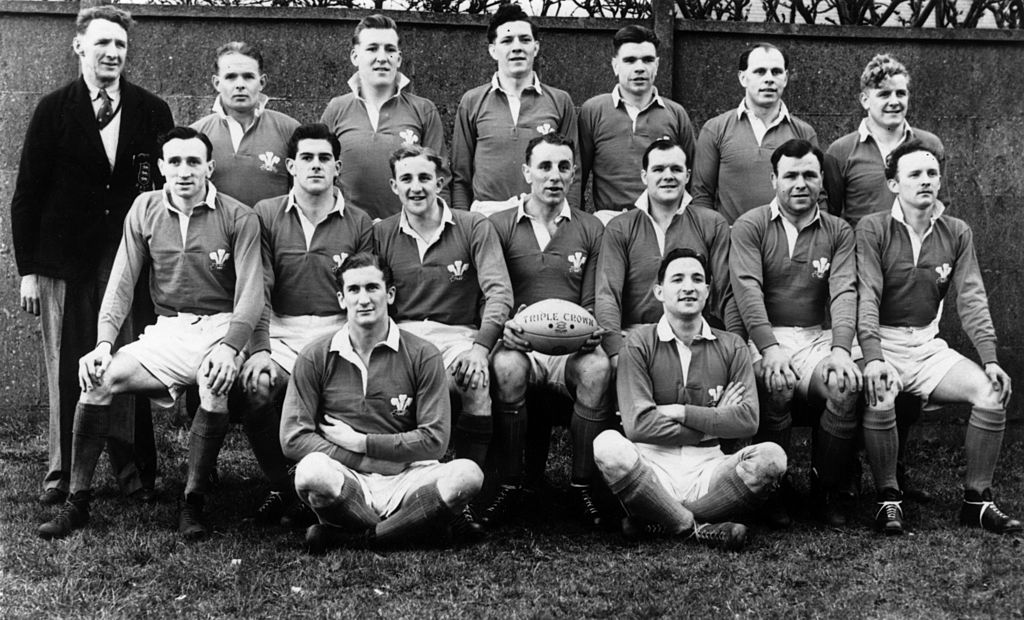Shining star Lewis Jones still beams bright at 89

24th March 1950: The Welsh rugby team who are to face France in their next match at the Cardiff Arms Park (back row, left to right) I Jones, G D Robbins, Don Hayward, Roy John, R T Evans, Ray Gale, W B Cleaver, (front row) Ken Jones, Malcolm Thomas, Lewis Jones, John Gwilliam, Jack Matthews, Cliff Davies, Gerwyn Williams, (on ground) Rex Willis and D M Davies. (Photo by MacMullan/Fox Photos/Getty Images)
Even now, 70 years after he started blazing trails across the rugby world, Lewis Jones’ achievements still make the average meteor look like a here-today-gone-tomorrow flash in the pan. Consider the facts:
At 18 a winning debut for Wales, against England at Twickenham, followed within weeks by a first Grand Slam.
A Test Lion at 19, against the All Blacks, and a winning series against Australia.
At 20, a second Grand Slam with Wales.
At 21, a transfer from Llanelli (or Llanelly as it was then) to Leeds for a world-record £6,000.
All that has been well documented, less so the circumstances behind his move across the Rubicon from his native Gorseinon in November 1952.
Jones’ first contact with his future employers took place not in the back room of a public house in South Wales but in the Long Room at Lord’s.
It was there, on a day when the Navy all-rounder had been on the receiving end of an unbeaten century from Brian Close during the annual match against the Army, that Jones (pictured main, to the left of ball-holder John Gwilliam) first met Yorkshire businessman Ken Dalby, the manager of Leeds Rugby League club.
The loss of Jones prompted the late Cliff Morgan to lament that Wales had lost a great full-back, a great wing and a great centre.
The blurb for his autobiography, King of Rugger, gave some idea of his stature. “Lewis Jones,” it said, “is to rugby what Stanley Matthews is to soccer, Keith Miller to cricket and Sugar Ray Robinson to boxing.”
During eleven years at Headingley, Jones accumulated 3,445 points, third on the League’s all-time list.
In 1956-57, Jones broke the world record for the most points in a League season: 496 with 36 tries and 194 goals from 48 matches. He broke fellow Welshman Jim Sullivan’s season points record playing for Great Britain against France on his 25th birthday.
Yesterday was his 89th, spent as usual in Leeds, home, as he puts it, to ‘the greatest rugby club of all.’